-
Posts
1234 -
Joined
-
Last visited
Content Type
Profiles
Forums
Store
Downloads
Recruiting - 2020
2019-2020 Football Season
Football
Entertainment
Sports
News and Business
Cloak Room
Transfer Portal
Recruiting
Events
Posts posted by PTINS
-
-
-
34 minutes ago, salonghorn said:
Who do you think that we are looking at
Not sure who.
I don't remember if is was Bobby or Gerry or some other $9.95er, or a poster here, but i read it early in the process.
Time to push all the chips in the pile.
-
- Popular Post
- Popular Post
12 hours ago, William Bludworth said:This feels two ways:
1. Sark was told that if he doesn't fix shit ASAP, he should start getting his resume together.
2. Sark himself is tired of this shit, and when you can upgrade, do it every time. Akina had to go, but I'm surprised about PK. I read he wanted to go back to the PNW, and that's cool., but why not just put in your resignation and leave rather than be fired? Akina had to fucking go. Good riddance.
I like Mischamp a lot, and he has produced some of the best and most physical defenses we've had in a long, long time (Sergio meet Taylor Potts). We had a lot of talent then too, just like now. I'm really surprised he came out of retirement, but it's Texas and he's had a house here since..,.almost 20 years, and he and his wife vacation here. He's been on campus a few times to converse with Sark. There's a video somewhere on YouTube with Muschamp talking to Baxter, Sweat, Murphy, Barron, and some other guys before heading to take on Washington in the CFP 2 years ago. I'm totally happy with the hire.
12 hours ago, scramblyn said:Sark isn’t a guy I like on a character or personal level anymore. I suspect a lot worse happened but his defensiveness this year pissed me the fuck off. It also appeared as though he went on autopilot a bit and assumed his team was gonna roll. That pissed me off too.
it’s very possible he had his shit pushed in and had some folks get in his face, I think he deserved it tbqh. Fuck him.
now does that mean he’s going to be shit canned, doesn’t look like it but he’s now saying shit and doing shit that is good for the program, good. I still don’t like him, but fix your RB/OL, stop with the non-stop pro style shit that gets our QB killed, run a mix of pro and college offense and, stop the god damned penalties, stop talking about culture and demand attention to detail at every level and win fucking games. That’s it.
2 hours ago, BurntOrange&White said:Gerry Hamilton
Posted 3 minutes ago
Will Muschamp thoughts, Jadan Baugh and recruiting
What a day on the Forty Acres Thursday. One of the very best pure coaches on a side of the ball that has ever donned the burnt orange and white has returned to Austin. Make no mistake, this was a very good day for Texas football.
My thoughts this morning will start there. And I'll also hit on Jadan Baugh and a couple of recruiting thoughts.
Thoughts on Will Muschamp ...
First off, I met Will Muschamp in 2008 shortly after he was hired at Texas. To say I'm a fan of his as a defensive coach would be an understatement. And pure coach in general.As the son of a Texas high school football coach of 40 years, being around coaches on the high school and college level in football and basketball my entire life, Will Muschamp has the characteristics I'm drawn to. Of course Muschamp is an excellent X's and O's coach. He's got multiple National Championship rings, and was the DC of Nick Saban's first NC at LSU. Saban was such a fan, Muschamp went to the Miami Dolphins as the associate head coach and DC. He's been very successful as a DC at every stop. And in recent years he return to Athens to help get Kirby Smart's Georgia Bulldogs over the top with his former college roommate Smart. For those that don't know, Muchamp, Smart and Mike Bobo were all college roommates at Georgia.
What I absolutely love about Muschamp as a coach and person begins before an install, video breakdown, play call or scheme. It's the intensity, the passionate communication, the non-stop motor, a fire that burns constantly, the way he challenges his defensive players to bring the best out of them, the demand for physicality, the demand to be detail oriented of his players which creates discipline. Does that mean Texas will be No. 1 in defense next year and never commit a penalty? Of course not, this is a sport in which chasing perfection is extremely difficult to attain. But the Texas defense will bring what is needed from a mentality and physicality stand point to have the possibility to take the next step.
Colin Simmons final season on the Forty Acres will be maximized. Always health related in sports, Texas may well have the best pass rush team in my years covering Texas or being in this business.
Can't wait to see how Texas puts the pieces together in the portal to give Muschamp the best parts possible for 2026.
You had me at Intensity.
2 hours ago, William Bludworth said:What's the deal? He got to Georgia in 2021 and helped them win the NC in 2021-2022, and they have only missed the CFP once since he got there. The spending time with family I believe was so he could go see his kid(s) play at Vandy instead of traveling back and forth.
I saw the tag line on phone last night... "PK Fired" ...WT holy Fuck??????
"Muschamp ..." Oh, Ok. Sorry about PK, but ...
"... when you can upgrade, do it every time.
he has produced some of the best and most physical defenses we've had in a long, long time
stop the god damned penalties, stop talking about culture and demand attention to detail at every level and win fucking games.
One of the very best pure coaches on a side of the ball that has ever donned the burnt orange and white has returned to Austin. Make no mistake, this was a very good day for Texas football.
What I absolutely love about Muschamp as a coach and person begins before an install, video breakdown, play call or scheme. It's the intensity, the passionate communication, the non-stop motor, a fire that burns constantly, the way he challenges his defensive players to bring the best out of them, the demand for physicality, the demand to be detail oriented of his players which creates discipline.
The spending time with family..."
I'm 100% behind this.
I liked PK, but his late game defense was the equivalent of Herman's turtling offense. Those late game collapses hurt us, even if we won the games. The scoreboard made easy wins look like close games.
Boom was Sark's 1st choice. I think that's where the list ended. Muschamp had a kid at Georgia; that was an easy decision for him.
When my company was acquired, I asked my new boss for a job description. He took his feet off my desk, grabbed a sticky note, and handed it to me; "MAKE MONEY!"
"Now, which word do you not understand?"
Boom doesn't send mixed signals. His style of communication is more direct.

His personality and style of play resonates with players. I think he will get Texas over the top and on recruiting a lot of star players that we almost get, but finish 2nd.
Coach Boom brings a passion and intensity that has been in short supply for a very long time. Somebody has to energize the team.
We have a lot of great players that are good people, culture guys, but they are all of the "walk softly and carry a big stick" kind of guys. Somebody has to charge up the team emotionally. Muschamp will find it, bring it out, and cultivate it. And equally important, that passion and intensity will bleed over to the offense.

After years of making money for others, I started my own company so I could watch my boy's grow up, did it for 10 years. A+ for Coach Boom. The man knows whats important in life.
Early on, someone alluded to the notion that prospective new offensive coaches were in the playoffs.
I thinking there's more to come.
"The oxen are slow, but the earth is patient."
-
 15
15
-
 1
1
-
Just now, PTINS said:
I'm not that familiar with the European gas market (I don't have tome to go down that rabbit hole), so i'm not exactly sure what gas price is shown in the graph.
But my first guess is that is an apples and boxcars comparison.
Below is a similar plot of US gas prices, with no indication of the source of the data. Directionally, it appears to be valid information, but the entities that have the trading data also tend to have an agenda, so beware.
If you over lay the two plots, they are similar, which one might conclude that US and European prices are the same.
In one sense they are, but in reality, they are very different. The US has 100's (1,000's) of supply points and 1,000's of delivery points, with 1000's of transactions reflected in the gas spot market price at a specific point in time. In the US, the paper price is indicative of the real price. By comparison, mainland Europe (Not the UK and Norway) has a much smaller gas market, with minimal native gas supplies, and fewer, and larger delivery points. In the one sense, it is also a valid price, but I expect the volumes transacted at that price on a daily basis is but a small fraction of the US volumes
From the graph, one might conclude the US and European prices are similar, so why do they need to import LNG? Well without LNG, that gas price goes off the chart.
I asked Google, "What is the delivered cost of LNG to Europe?"
(Again, directionally, the answer and information is within reason.)
"AI Overview
The delivered cost of LNG to Europe in late 2024/early 2025 typically ranges from $10–$15/MMBTU, but varies significantly with market conditions, adding liquefaction, shipping, and regasification costs to the base gas price (like U.S. Henry Hub).
Factors like high Henry Hub prices, increased demand, and freight rates pushed delivered prices up in late 2024, while cooler weather and ample storage can lower them, with prices sometimes hovering around 33–50 €/MWh (equivalent to $10–$15/MMBTU) at the Dutch TTF hub.
Cost Breakdown:
Base Gas (e.g., U.S. Henry Hub): ~$3–4/MMBTU (in early 2025 estimates).
Liquefaction: ~$2–$3.50/MMBTU (fees for turning gas into LNG).
Shipping (Freight): Highly variable, $1–$3/MMBTU or more, depending heavily on distance and tanker demand.
Regasification: ~$0.50–$1/MMBTU (cost to turn LNG back into gas in Europe).
Key Price Drivers:
Henry Hub Price: The cost of gas at the source (US).
Shipping Demand: Higher demand (like surges in winter) increases freight costs, widening the gap between source and delivered prices.
European Storage Levels: Low storage levels and cold weather drive up European spot prices (TTF).
Recent Trends (Late 2024/Early 2025):
Europe's high prices have attracted record U.S. LNG exports, even pushing prices above Asian markets.While U.S. Henry Hub prices rose, European spot prices (TTF) recently saw lower levels in late 2024 due to milder weather, though cold snaps can quickly reverse this, increasing costs.
In essence, it's a market driven by supply, demand, and transport economics, with U.S. LNG often costing significantly more in Europe than pre-2022 pipeline gas."
So, somebody is paying $10-15/MMbtu (3-4x the US gas cost) for the European gas price to be the "same" as the US.
20 years ago, the US built LNG import terminals (at the beginning of the shale boom, which unlocked Appalachia gas). Some actually imported LNG. Most of them started up as LNG export terminals, without ever importing LNG. It wasn't as simple as switching two wires and reversing the polarity. It takes $ Billions of dollars, tons of paperwork, and a regulatory nightmare, all of which is at the whim of the current administration. The long haul gas pipelines from the Gulf Coast to the Northeast, were bifurcated, with Appalachia gas supplying both the Northeast US demand and a new Gulf Coast LNG export market.
I'm responding to myself, but I didn't want to pollute my first response. This is borderline CR, but still related to the topic.
TLDR
The US has tremendous natural gas resources, and Biden kicked the LNG industry (and O&G) in the 'nads. Trump reversed that mindset, 100%, throwing gasoline on the fire.
Gulp.
Trump was right. I can't say it.The US should produce gas, make LNG and export it, and Europe is much closer and easier than SE Asia.
But it will impact domestic gas prices. The next time Texas freezes for a week, who gets the little bit of gas still being produced? The sparks fly when the reality of the present day market gets in the face of long term contracts, and $$$. The answer is not binary, and it it not finished when the papers are signed. In is a huge, living, constantly changing beast, at it needs to be treated as such.
DJT may be a self anointed real estate mogul, but I think he and his 2 minute attention span would get his ass handed to him trading energy commodities. To be fair, I think that also applies to most of our former Presidents. I will never understand the pushback on putting energy professionals in the Department of Energy.
What happens with the next US administration? Back to the other extreme?
Europe is replacing Russian natural gas with imported LNG, from the US, and other places.
Europe will be dependent on the kind hand offered by the US.
Kind'a like NATO was. How's that's working out for them?
While looking for Russian refinery data, I saw some verbiage that Russia now flares more gas than any other country. It used to be between Iran and the US.
Russia I'm not sure if that includes Nordstream, but the number was close to the pipeline capacity, ~ 3-4 BCF/day, or ~ 1 or 2 LNG plants.
When all is said and done, Russia has the gas production and reserves and the pipelines assets are already in place, and Russia SHOULD still be the cheapest source of gas for Europe. But Russia should never be the only source.
-
 2
2
-
-
15 hours ago, atomheartbevo said:
Natural gas prices in Europe have all but returned to normal since Russia's full scale war in Ukraine. In fact, the only reason for the spike in 2021 and 2022 has been Russia's energy war against Europe, which started even before the full scale invasion of Ukraine. The numbers clearly say that.
It proves many things: Russian energy was never cheap, neither politically nor economically. Russian energy was always unreliable. Russia always needed Europe more than the other way around.
I saw the downfall of Southstream.
I saw the downfall of Nordstream.
And now the whole European market for Russian gas is getting buried.
This is what I mean when I say that Russia is losing in the long run. All what you need is determination, patience and tenacity.
The European market was the primary reason why Russia raked in so much money the last three decades.
The European customers were reliable, paid well and were easily to access, who in turn put in a lot of investments into Russia. Now all of that is gone because of petty imperial ambitions of a short man who never accepted the downfall of the Soviet empire.
Russia is now forced to sell oil and gas with huge price cuts, which barely covers processing costs while India and China completely suck out the last bits of life from Russia.
14 hours ago, Chad Fuck said:Kinda like China and US soybeans!
I'm not that familiar with the European gas market (I don't have tome to go down that rabbit hole), so i'm not exactly sure what gas price is shown in the graph.
But my first guess is that is an apples and boxcars comparison.
Below is a similar plot of US gas prices, with no indication of the source of the data. Directionally, it appears to be valid information, but the entities that have the trading data also tend to have an agenda, so beware.

If you over lay the two plots, they are similar, which one might conclude that US and European prices are the same.
In one sense they are, but in reality, they are very different. The US has 100's (1,000's) of supply points and 1,000's of delivery points, with 1000's of transactions reflected in the gas spot market price at a specific point in time. In the US, the paper price is indicative of the real price. By comparison, mainland Europe (Not the UK and Norway) has a much smaller gas market, with minimal native gas supplies, and fewer, and larger delivery points. In the one sense, it is also a valid price, but I expect the volumes transacted at that price on a daily basis is but a small fraction of the US volumes
From the graph, one might conclude the US and European prices are similar, so why do they need to import LNG? Well without LNG, that gas price goes off the chart.
I asked Google, "What is the delivered cost of LNG to Europe?"
(Again, directionally, the answer and information is within reason.)
"AI Overview
The delivered cost of LNG to Europe in late 2024/early 2025 typically ranges from $10–$15/MMBTU, but varies significantly with market conditions, adding liquefaction, shipping, and regasification costs to the base gas price (like U.S. Henry Hub).
Factors like high Henry Hub prices, increased demand, and freight rates pushed delivered prices up in late 2024, while cooler weather and ample storage can lower them, with prices sometimes hovering around 33–50 €/MWh (equivalent to $10–$15/MMBTU) at the Dutch TTF hub.
Cost Breakdown:
Base Gas (e.g., U.S. Henry Hub): ~$3–4/MMBTU (in early 2025 estimates).
Liquefaction: ~$2–$3.50/MMBTU (fees for turning gas into LNG).
Shipping (Freight): Highly variable, $1–$3/MMBTU or more, depending heavily on distance and tanker demand.
Regasification: ~$0.50–$1/MMBTU (cost to turn LNG back into gas in Europe).
Key Price Drivers:
Henry Hub Price: The cost of gas at the source (US).
Shipping Demand: Higher demand (like surges in winter) increases freight costs, widening the gap between source and delivered prices.
European Storage Levels: Low storage levels and cold weather drive up European spot prices (TTF).
Recent Trends (Late 2024/Early 2025):
Europe's high prices have attracted record U.S. LNG exports, even pushing prices above Asian markets.While U.S. Henry Hub prices rose, European spot prices (TTF) recently saw lower levels in late 2024 due to milder weather, though cold snaps can quickly reverse this, increasing costs.
In essence, it's a market driven by supply, demand, and transport economics, with U.S. LNG often costing significantly more in Europe than pre-2022 pipeline gas."
So, somebody is paying $10-15/MMbtu (3-4x the US gas cost) for the European gas price to be the "same" as the US.
20 years ago, the US built LNG import terminals (at the beginning of the shale boom, which unlocked Appalachia gas). Some actually imported LNG. Most of them started up as LNG export terminals, without ever importing LNG. It wasn't as simple as switching two wires and reversing the polarity. It takes $ Billions of dollars, tons of paperwork, and a regulatory nightmare, all of which is at the whim of the current administration. The long haul gas pipelines from the Gulf Coast to the Northeast, were bifurcated, with Appalachia gas supplying both the Northeast US demand and a new Gulf Coast LNG export market.
-
 2
2
-
 1
1
-
-
My initial reaction was the subsea drone hit mostly the dock and less of the submarine. Maybe not.
Per wiki, the Kilo Class submarine is 238-242 feet long, depending on the model.
I merged a couple of screenshots of the submarines in the harbor, the targeted sub and a random sub at the dock.
Bottom line, even though the videos show the explosion at the corner of the dock, it appears the attack may have inflicted more damage to the sub than what you can tell from the recent photos.
The red line is ` 240 feet long

-
 7
7
-
 1
1
-
-
-
Re: The isolationist view of the US relative to the world.
Nowhere is this view more impactful than the ignorance of the US, the people and the government, as it relates to oil and gas.
The US put an oil embargo on Japan pre-1941, a country that was 100% dependent on imports. They bombed the fuck out of us.
The US was late to the party, but the first thing they did was go to Africa to stop Germany's rush to the Arabian oil fields.
Prior to 1973, the US was by far, the technological leader in the industry, and the availability of cheap gas across the country was a reality, and an expectation, cause "were Americans". No body cared that most of the oil came from foreign counties.
The U.S. and other nations supported Israel in the Yom Kippur War. Saudi Arabia led OPEC in the Arab Oil Embargo of 1973-74, causing domestic oil prices to quadruple, from $3 to $12/bbl, triggering gas shortages, long lines at pumps, stagflation, and a major shift in global energy policy towards conservation and energy independence. (OPEC was modeled on the Texas Railroad Commission)
In the US, conservation and energy independence took a back seat to blaming the domestic oil industry for something that happened half way around the world. Something they had no control, or influence over. The couldn't control oil prices, but they could control natural gas prices, a domestic industry.
Government regulations controlled interstate gas prices, but not intrastate prices, eventually putting the producing states (Texas) at odds with consuming states (the Northeast).
The Iranian Revolution in 1979 was directed at the US, for harboring the Shah, a US/European puppet. Oil prices quadrupled again, to over $40/bbl. Guess who was to blame. Again.
This was not all bad. The spread between unregulated oil prices and regulated gas prices gave the Gas Processing Industry, a margin based business, a boost like nothing before or since. In 1979, the O&G industry attracted the best and the brightest. The advice to "The Graduate" in 1967, a single word, came to fruition; "Plastics."
As a country, we have been on a 50 year crusade to methodically dismantle the 150 year old domestic industry, in large part, because people just don't understand how it works, or even care.
Though there are fewer US companies and much less competition, the domestic oil & gas production is higher than ever before, and the US is still the technological leader in the industry, we just have a lot less influence on world affairs.
Which is what an Isolationist wants.
-
 4
4
-
-
3 hours ago, scramblyn said:
Long time lurker infrequent poster here but I’m fully convinced that once the war started and it became clear Russia was in a quagmire that the underlying US policy shifted to keep Russia occupied and to bleed them out slowly. Preventing escalation to even tactical nukes was a secondary motivation, but the benefits of snagging Russia in military and economic death spiral for a half to a full decade here make too much sense. The current admin waffles but I think inside the intelligence communities this still remains the message and causes said waffling in some cases to Ukraine’s favor.
3 hours ago, Chad Fuck said:I agree to a large extent to this premise. Certainly this was true under the Biden administration. The bold part is my sincere hope - that there are people who are doing the right thing in between the lines who know that "this too shall pass."
2 hours ago, scramblyn said:Netflix has a solid Cold War documentary called turning point, ...
semi related, I was shocked to see Russia refining capacity only knocked down 6% thus far. Meaningful but is it enough?
all that to say, I’d put the over under on this conflict ending at 2 years from now and I could be convinced it’s longer.
I’m curious what the intelligentsia on this thread thinks.
"I’m curious what the intelligentsia on this thread thinks."
I believe this thread is the most broad based, informative exchange of information I have been a party too, whether as a student, a professional in the work place, or a casual observer.
My limited search capabilities within the thread are frustrating at times, because many of these individual tangents have been discussed at length, multiple times. An occasional refresh is welcomed, as new information becomes available based on the dynamics of a multifaceted war.
As cumbersome as it may be, going back and reading older posts is beneficial, as most of the responses today are abbreviated versions of the more in depth analysis from previous posts.
I'm guilty of same, as I have posted versions of the same thing many times. The fundamentals stay the same, but the particulars change constantly.
With that said, a rereading of Tom Clancy's "The Bear and the Dragon" is on my holiday list.
It has always made sense for Russia to be the main supplier of Oil and Gas to Europe and China. Always. It didn't happen until Russia joined the commercial side of the world and made a move to monetize their tremendous natural resources. Their oil & gas industry in many ways is in the same state as the Permian Basin was in the 50's-60's. Well known, but virtually untapped.
Russia played nice, negotiated the Nordstream gas contracts w/ Germany and western Europe, and the Sakhalin LNG contracts w/ Exxon, Shell & SE Asia, and opened the door for foreign investment to step in and monetize the resources.
And then, Russia's gonna Russia. They invaded Ukraine.
At the end of the day, everybody has a price. Russia has available, exportable, relatively cheap Oil & Gas, and no safety or environmental constraints, and is void of a litigious society.
2 hours ago, atomheartbevo said:It's a lot more than that, but it's also tough to quantify (paging @PTINS ). They are refining far less, but they are exporting far less, so they are close to staying even on being able to refine what they need internally.
This is a decent breakdown.
https://carnegieendowment.org/russia-eurasia/politika/2025/10/russia-refinery-damages?lang=en
I don't think it was 38% (the article is probably right 38% was the upper range), but I wouldn't be surprised if it was in the 20s (only offset because they are exporting less). I don't think 2 years, but I think we will know how things will shake out over the next 6 months, because the tempo is such that Russia refining capacities are going to drop double-digits going forward and as more air defenses are destroyed/exhausted, we will see a lot more targets taken out.
Re: Russia Energy
When I throw my dart, I peg the Russian refining capacity reduction at ~ 20%.
The US Energy Information Administration (EIA) is a great resource for all things energy. The data is very good, but it is not meant to be a near term analysis.
Here is a link to their brief on Russia energy, as of 2024.
Country Analysis Brief: Russia Last Updated: July 24, 2025
The 38% of Russian refining capacity offline mentioned by @atomheartbevo's reference in the Carnegie article was a simple calculation. Ukraine targeted and hit 38% of the refining capacity, so as much as 38% of the capacity might be offline.
Even with the microscope focused on the US refining industry, getting near term data is hard, as the reporting is such that its better to give the actual data to the government later, rather than giving them preliminary data sooner.
Refining capacity is a loose term. You might have 4 units built over the past 80 years that do basically the same thing. The capacity of all 4 is deemed to be the nameplate refinery capacity, when in reality, Unit 4 runs at 100%, Unit 3 runs at 75 %, Unit 2 runs at a variable rate based on demand, and Unit 1 basically mothballed.
Refineries "make" more products than the crude they refine. There is a 1-3 % gain across the refinery. Crude oil is a mix of bb's, peas, marbles, ping pong balls, and tennis balls. Refined products are more like the purity components, so when you separate the molecules, the volumes "grow" as there are more empty voids between each ball.
A 400,000 BPD refinery would refine a train of tank cars 4 miles long, every day. Refineries have large storage capacities to insulate them from supply/demand disruptions, say a nominal 10 days of storage on each end; in this case, ~ 8,000,000 bbls of storage. One company may report net change to total storage volumes as "refining", where a second company would report actual refine inputs, and a third may report actual refined products made. I expect the data given to the EIA is consistent, but any reporting on industry trade reporting will be all over the board.
The current state of Russian refining operating rates is a hard thing to pin down, even before the Ukraine invasion.
Russian Nameplate Capacity is ~ 6,500,000 bbl/day (6.5 MM BPD), with a pre-war operating capacity of ~ 5.5 MM BPD, with ~ 17% of the capacity always offline.
Of the 5.5 MMBPD normal capacity, estimates of capacity reductions range from 0.5-2.0 MM BPD, or an operating capacity ranging from from 91 to 63%. Some of range could be the difference between October actual volumes v. December estimated throughput volume.
Ukraine has mentioned specific refinery columns that were targeted, but confirmation on exactly what was it, and how bad, is virtually non existent. Did they hit the pressure vessel or the lines connected to it? A breach of the large pressure vessel (10+ ft diameter) is normally a total loss, as these are ASME code vessels with non negotiable specifications. That wold be a 6+ month replacement. In Russia, maybe they weld a plate over the hole and call it good. That would take a few weeks or a month.
Normally, Russia produces ~ 200% of their internal diesel demand, and ~ 130% of their gasoline demand, with considerably more exports of diesel than gasoline. On a short term daily/weekly basis, a specific refinery going off line may cause spot shortages. Over time, a refinery can change their operations to make more more gasoline and less diesel.
The US moves the majority of refined products (90+ % ??) via pipeline to a terminal, and trucks from the terminal to the gas stations. In Russia, other than Moscow and maybe St. Petersburg, most of the refined products appears to move by rail. I combination of a refinery attack, a storage depot attack, and a rail bridge attack in close proximity could cause a product shortage for some period of time.
-
 6
6
-
 3
3
-
-
On 12/14/2025 at 4:09 PM, Gatorubet said:
@PTINS - i’d love to hear your thoughts on a subject I know nothing about. I find it interesting that the city of Angarsk in Siberia - a larger city of 200,000 residents - has been largely without any building heating since December 7. This includes homes, apartments, hospitals, schools, etc. When the heat went out, the temperature was -20. Today on December 14th the heat is still out,
Angarsk had a recent heat wave, so the highs are in the teens and low 20s, while trending colder at the end of the week. That said, if the temperature remains below zero for a week straight, that city’s residents are living in an icebox.
This news jogged my memory about another fact I read recently, that all of the Ukrainian attacks on the refineries have prevented the refineries from planned outages to transition to winter fuel, fuel that contains the necessary ingredient to prevent fuel freezing and gelling or doing whatever it is fuel does without those ingredients.
If that inability to refine winterized gas is true and continues into the December and January winter months, what effect will that have on transportation in the country? IOW, what can you tell my ignorant self about the absence of winterized refined fuel in a country so cold - and the consequences to the countries’s economy and the military operation in Ukraine?
These are two similar, but unrelated issues; A power plant going down, and refinery operations.
There was accident at the Angarsk Irkutsk-9 Combine Heat Power Plant, a 540 MW coal fired facility that provides power and heat to both the city (250,000+) and the Rosneft-Angarsk Refinery (200,000 BPD) co-located at the sight. Angarsk is 3,000 miles from Moscow, and ~ 150 miles north of the central Mongolia, in the middle of nowhere, and I mean nowhere.
The Power Plant has 6 units, (capacity of 330 MW), that were built from 1963-69, and 2 units (capacity 210 MW) that were built in the early '80's. It is possible new natural gas fired boilers were added in the last 5 years, but nothing shows any newer additions.
An accident occurred on December 7 when a boiler unit at the plant failed, and another boiler was reportedly shut down due to a malfunction a day earlier. Boiler accidents in the US are rare. In Russia, ??? depending on 60-70 year old boilers is not a comforting feeling.
"It was reported that all services are on high alert. The emergency regime has been introduced in the Angarsk district in connection with the accident at CHPP-9. Heat supply is limited in 1,546 apartment buildings housing more than 167,000 people and 121 socially significant facilities," the local mayor's office said in a statement."
"On Dec. 1, hundreds of motorists were stranded on a stretch of the Baikal Highway, part of the Trans-Siberian Highway, after three days of severe weather brought temperatures near minus 30 degrees Celsius (minus 22 Fahrenheit), heavy snowfall and strong winds. At its peak, the jam stretched roughly 100 kilometers (62 miles) along the southwestern shore of Lake Baikal (~ 50 miles from Angarsk). Some drivers, including families with children, reported running low on fuel, water and food."
The logistics chain is always critical, and in remote areas, with minimal infrastructure, during extreme weather conditions, good luck with that. I would think any available power is moving towards the west (Moscow), not the east (Siberia). After 3 years of war and reduced energy availability, there are probably many localized areas that are one event away from a similar situation. One thing they have in their favor, they come from heartier stock than the average
Austiniteperson.The refinery operations is something different.
Refinery turnarounds (long term scheduled maintenance, including shut downs, every 4-6 years) are necessary, but often postponed or delayed for any number of reasons, a war being one of them. It is not necessary to shut down the refinery to change the qualities of the products produced. US refineries do it twice a year to transition from the winter blends to the summer blends for gasoline and other transportation fuels.
I am not familiar with the different fuel blends for the northern climates. 3 years of attacks on Russian refineries and gas plants, has probably reduced the availability of some of the blending stocks (lighter weight, more volatile) Russia may use in gasoline blending. I know alcohol is an option, but that consumption is prioritized in other areas.
Generally, aviation fuel (Kerosine) is a cleaner, filtered diesel that is better in extreme cold. But Diesel has better lubrication properties, so it is better for engines with more moving parts, like car engines v. jet turbines.
I would expect the quality control on Russian refined products is poor, especially so for the domestic market. But I'm sure the average Russian has been though similar circumstances before and the black market is able to meet the demand.
-
 3
3
-
-
2 hours ago, Tex-19 said:
That is a sad graphic.
Texas is ~ 25th percentile in "Yards before contact" and ~ 27th percentile in "Yards after contact". Over all, Texas is one of the 10 worst non-QB rushing teams in the country.
Only 3 SEC teams in the top quartile of either speaks well of SEC defenses, I think.
Both UTSA & Texas State punching above their weight.
-
 2
2
-
-
3 hours ago, Chad Fuck said:
pretty forward CG and perhaps a payload too heavy for the engine as well.
Glide path similar to a rock. The guys lucky it cleared the window,
-
 2
2
-
 1
1
-
-
32 minutes ago, Vertuzzi said:
Would you say that Europe’s plan to phase out Russian LNG by 2027 is still obtainable? Imports from the US and Qatar are increasing, just wondering if it would be enough to completely offset the Russian pipeline.
That is a complex question. "Phasing out" is a price sensitive term, and human nature generally means anybody will do anything for the right price. Putting the LNG "sanctions" aside, at the end of the day, a spot cargo of Russian LNG will be cheaper than others, simply because the transit time from Russia is less than the US Gulf Coast, or the Middle East, or Australia.
The capacity of the two Nordsteam Pipelines was ~ 10 BCF/day, which is ~ 4-5 world class LNG Plants. That is a big hole to fill. Russia's total LNG capacity is ~ 5 BCD, some of which was earmarked for Europe.
Some of these came on line recently, in the Arctic and St. Petersburg, and how much they can actually produce is kind of a mystery. It is new enough, and given the challenges of the arctic, and Russia business in general, demonstrating reliability is a prerequisite for longer term contracts. In many cases, the companies/countries that need the LNG are also owners in the liquefaction/export facilities, so they take their ownership share of the LNG in-kind, rather than depending on third party sells.
LNG is a very different animal than oil or refined products. In some cases, though there is a point to point "contract" for the LNG, that contract is in limbo until the ship docks at the destination. In times past, it was commonplace to have a ship change direction in transit and go to another destination, without any significant contract repercussions. While on the high seas, it is fair game for the highest bidder. Even within the local gas market, that information is closely guarded, because a huge influx of gas moves the market.
US LNG costs will become more expensive, because the underlying demand for natural gas will increase.
In the early 2000's, gas was expensive, so the US started building LNG import terminals.

The Chenier Plant at Sabine Pass started as an import terminal in 2008. We received LNG imports into Louisiana ~ 2010 (I think we received 4 cargo's), and in 2012, Chenier received a FERC permit to building export facilities. The combination of horizontal drilling and hydraulic fracturing of shale, unlocked the gas resources, and all bets changed.
Biden's election in 2020 changed the narrative, and Russia's Invasion and Nordstream's explosion spiked gas prices, for a bit.
The Donald, and new reality of the US stepping in to fill the European void from losing Russian gas is not an issue from a resource/capacity perspective. The price of the LNG is the first big question.
Domestic gas prices have doubled in the past few months. Cheap oil stops the drilling in the Permian, which is primarily based on oil economics. Appalachia is all gas, much higher near term gas potential than the Permian, but moving gas south to the Gulf Coast is limited by pipeline capacity.
Sending US LNG gas to Europe while increasing domestic gas prices is going to leave a mark. The Eastern US is already seeing increased gas bills because of administrative and infrastructure costs. Layering in higher commodity prices will not be well received.
And, as we all appreciate, the whims of a new administration in DC, is hard to predict.
-
 2
2
-
-
1 hour ago, Vertuzzi said:
Interesting article from the journal last week. The section regarding the bridge closing in northwestern Germany, which cut off the only railway link serving the North Sea port of Nordenham, really drives home just how critical infrastructure protection is during war.
Critical infrastructure is not designed to be war proof. A single drone with a grenade is a scary thought.
Yes, I understand and support Ukraines targeting of Russian O&G export infrastructure to cripple the war machine.
But longer term, removing 10% of the world oil production, and the closest source of natural gas to Europe, is going to have longer term effects, on everyone. The coupling of war reparations and lifting of sanctions is going to be a thorny issue that will take time.
-
 1
1
-
 1
1
-
-
20 hours ago, Schulz2.0 said:
"Overnight on 4–5 December, Ukrainian long-range drones reportedly struck the gas terminal at Russia’s Temryuk port on the Sea of Azov, just across the Kerch Strait from occupied Crimea. Russian regional authorities themselves confirmed a UAV attack and subsequent fire that damaged port infrastructure, while videos from the scene show large fuel fires and secondary detonations. Open-source analysis indicates the blaze centered on a gas terminal used for liquefied petroleum gas (LPG), with OSINT accounts suggesting that a nearby Gazprom-linked oil terminal may also have been within the target area. Temryuk is a key logistics hub handling LPG, oil products, and petrochemicals—commodities that help fuel Russia’s war machine and sustain its occupation of Ukrainian territory."
The Temryuk NGL Terminal is ~ 50 miles from the Kerch Strait, on the Sea of Asov.

Liquefied Petroleum Gas (LPG) is a commercial term, either the purity Natural Gas Liquid (NGL) products, or some combination of them. The terminal receives NGL's via rail, has ~ 100,000 bbl (4.5 MM gallons) of NGL storage on site, and loads the LPG tankers. More evidence of Ukraine's approach to systematically "degrade" the Russian Oil & Gas Infrastructure.
Good for them in choosing a location that is relatively remote, though it has a smallish footprint. The orientation of the storage tanks, or bullets, are pointed towards each other, rather than away. Not the ideal orientation, but changing that would point the tanks at the rail rack and tanker loading/unloading berth. Either way, it's a juicy target.
-
 6
6
-
 2
2
-
-
6 hours ago, atomheartbevo said:5 hours ago, Parliament said:
Even by Russian standards, that may not be sustainable.
Putin Signs Law Raising Russia’s Value-Added Tax to 22%
"President Vladimir Putin on Friday signed a major tax overhaul that will raise Russia’s value-added tax to 22% from 20% next year, a move aimed at closing the fiscal gap created by soaring military expenditures and falling oil and gas revenues amid Western sanctions.
More small businesses will also be swept into the tax system under additional changes. The annual revenue threshold for companies required to pay VAT will drop from 60 million rubles ($732,000) to 10 million rubles ($122,000).
Businesses have indicated in surveys that they plan to pass the tax hike directly onto consumers, who have already been strained in recent years by surging inflation linked to war spending.
Economists, including those at the Financial Ministry, have said they anticipate a modest rise in inflation as the VAT hike takes effect starting next year.
VAT is one of the government’s most important revenue sources, generating 11.5 trillion rubles ($148 billion) from January through October, or more than 38% of total federal revenue.
Under the changes, select food products, medicines and children’s goods will continue to be taxed at a reduced 10% rate. But certain milk-based products made with milk-fat substitutes, such as processed cheeses and spreads, will now be taxed at the full 22% rate.
Russia last raised VAT in 2019, when it increased the rate to 20% from 18%."
I have no understanding of Russia economics and their income and taxes, but dropping the threshold for taxing small business' from $732,000 to $122,000 seems like that puts a lot of mom & pop type business under an onerous burden, much worse than whey have seen the past 3 years. Selling gold reserves and crippling small business' already struggling while cutting basic services to the general populace does not seem like a recipe for success.
I have seen a lot of stories that virtually every sector of the Russian economy has been affected to the point that workers are not getting paid, are being furloughed and have no reason to work because of non-existent supply chains. There were rumors that unpaid shipbuilding workers may have sabotaged a new ice breaker/tug boat in St. Petersburg that was critical for moving large ships through the frozen water of the Baltic.
The Russian economy ...
-
 5
5
-
 1
1
-
 1
1
-
-
14 hours ago, atomheartbevo said:14 hours ago, Brisketexan said:
Saw him speak at UT a couple of years ago (with Lobo, RIP). He spoke on Ukraine, brilliantly.On 2/7/2023 at 10:24 PM, Brisketexan said:So, went to the Kasparov event tonight. It was fantastic. He didn’t pussyfoot around, he went right into discussing Ukraine, Russia, etc.
I took notes of particularly interesting points; Lobo criticized me for having my face in my phone at times, but I was typing.
Below are my raw notes, I ain’t a court reporter.
——————
In the last few years, so many politicians have turned into clowns, and a comedian has become a hero.
We must judge things relatively. Maybe the dollar has weakness, but the other currencies are weaker.
Ukraine is the frontline of freedom, in the never-ending battle between freedom and tyranny.
Why was Putin so wrong about how Ukraine would receive him? Goes back to 1994, and Yeltsin, and him launching the war in Chechnya. At the same time, Ukraine saw something Russia never has - a peaceful transition of power. For all its ills, it had a civil society that would not accept a ruler they did not choose.
They demonstrate to us that there are values worth fighting and dying for.
Americans got it wrong - thought that Ukraine would fold in two weeks, so we shouldn’t give them weapons that will end up in Russian hands.
Dictators lie about what they did, but they are always telling us what they are GOING to do, accurately (see Mein Kampf).
One of Putin’s first acts - restoring Soviet anthem. It’s a symbol, but dictators need symbols. He remained reserved about his plans, because he wasn’t ready to move on them. Kasparov knew what he was going to do if ever given the chance, and he’s gotten it.
Skyrocketing oil prices gave Russian people a taste of “normal life.” McDonald’s, etc. It MUST be a democracy, right?
The parallels between 2014 Russia (Sochi Olympics) and 1936 Germany (Berlin Olympics) were strong. And people overlooked these rising problems because business is business, and we ignore the lessons of history. 20 months after 1936 games, Hitler annexed Austria. 20 DAYS after Sochi, Putin annexed Crimea.
Weakness from Obama and red lines. Merkel said we can’t get off German gas, she had 16 years. Turns out they could get off Russian gas in 10 days. Weakness of western leaders emboldened Putin.
Putin has an army, money, and nukes, yes. But let’s go back to 1941. Great things happen due to leadership or lack thereof.
January 1943, Casablanca conference, set the goal of “unconditional surrender,” which took political will.
The challenge of Stalin taking over West Berlin. For 11 months, allied leadership defeated him. I am a Berliner. Tear down this wall. Leadership moments. How can you expect a wall to come down that’s been here so long? Bold leaders push it.
Now, when people look at America, they don’t know what it is. We used to have a consistent policy approach when it came to the Cold War. We are still a factor, but it depends on who is in the White House.
The aid we provide is much less than Ukraine needs, but much more than Putin expects.
Tucker Carlson is Russian propaganda - is he parroting them, or are they parroting him?
Our fear of China sounds exactly like our concern about a rising Japan in the 80s. Yet for all we fear China, they couldn’t come up with a decent vax, we did.
The remedy to these problems is freedom and creativity that comes with it.
What has surprised him? The volume of the genocidal crimes committed in Ukraine. And how many Russians accept it. They don’t WANT to know the alternative (true) viewpoint. It’s a shield that protects their conscience.
Russian message now is that they have to deplete the Ukrainian forces, fight to the last Ukrainian. There’s already a quarter million dead soldiers, total. Went from 60,000 artillery rounds fired a day to 15-20k, though.
Re the warnings that the West is sleepwalking into WWIII - we are already in WWIII, Putin already decided that. This was never about Ukraine, which he doesn’t recognize as a true independent nation. It was an attack on the rest of the world, governed by treaties, agreements, and the rule of law. It’s about BEING the law, via might makes right. Indeed, some Russians thought WWIII was the Cold War, which they lost. This is WWIV. And we were sleepwalking, BEFORE this war.
He’s not playing chess. He’s playing Poker, with bluffing, and watching your opponents fold on your bluff time and again. He thought that the free world would fold, and he would have been right, but for Ukrainian leadership and courage.
Re: taking back Ukraine, is it an attack on Russian soil? We’re back to poker, and probabilities about the risk of escalation. Dictators move to take advantage of perceived weakness. He thought he could get away with it. Oh, and when you say it’s not a bluff…it’s a bluff. All other dictators are watching this. Ukraine affects Taiwan’s fate. Ukraine’s victory would make dictators tremble, its loss will do the opposite. It even inspires the Iranian revolution - “I wish Russian men had the courage of Iranian women.”
He wants reparations to be paid, and war criminals brought to justice. And as long as Putin is in power, the war won’t end. Empires like that must expand, if they retreat, they collapse. War is the only justification for him remaining in power. The liberation of Ukraine is the first step to liberating Russia - true Russian patriots should be doing all the can to help Ukraine win.
How will it end and how is Ukriane succeeding? Freedom wins. He’s an optimist by nature, history doesn’t end. We know that evil doesn’t die. It may be dormant, but when we become complacent, it rises up. Ukraine wins because they are creative. He believes it ends this year (optimist), because attrition plays to Putin’s hands. We don’t want this war to be an issue in our presidential campaign. Victory for Ukraine is victory for Russia.
How and why does Putin leave (bullet, coup)? He’d rather not speculate, instead talk about what history shows us. Weakness, losing, is when he leaves.
Big difference between Russia and Ukraine: Russia is still an imperial mindset (comes with conquest, expansion). Ukraine has shifted to a statehood view. Russia has to make that shift.
The only way to wake up Russian society is a decisive military defeat. The Russian public needs to understand that the age of Russian empire is over. There are parts of Russia that will break away. If it makes the transition from empire to national state, it will be smaller. We don’t know the outcome of the collapse of the Russian empire exactly. We don’t know how and when it will end, but it will end.
He will fall because his powers will fail. Dictators need a myth, and a loss shatters that myth (loss of Crimea would do that).
Will leadership go along with him if he wants to use nukes? What would a mafia do? Dying for and with him is not what they’re interested in.
Interesting question to him: What is a downside of being intelligent? Frustration. What seems obvious to him, why don’t others see it? He also knows the limits of his skills, he knows what he’s good at and what he’s bad at.
Do you believe Ukraine can win without sustained western support, and will we support them long and strong enough? No, they need our support across the board. But they really don’t need that much. Most of our aid is weapons sitting in storage. They just need what we have in stock. It is not a charitable contribution - THIS is the war that NATO has been preparing for since 1949. The planned battlefield was the Rhine, now it’s the Dnipro. The principles are the same, Ukraine is doing what NATO was built for. Imagine, we can end the Russian problem by supplying Ukraine with our weapons. It’s crazy that it’s even a debate. It’s the greatest bargain imaginable.
This is our war. Putin is fighting us. He is fighting the world we live in, the world of the rule of law and norms that has made us successful and prosperous.
—————
Lots to digest. Really interesting stuff from a voice who has been sounding the alarm on Putin’s plans for over 20 years.I reposted @Brisketexan 's summary of Kasparov's comments from February 2023 for convenience.
After reading those comments again, and remembering what I heard, I count that short time listening to Garry Kasparov speak as maybe the most enlightening hour of my not so young life. I felt that way at the time, and still do.
The sad reality is we are almost 3 years down the road, and here we are. The former arsenal of democracy; now we have our hands extended, not to lift those that need a hand, but to pull them out of the way so we can make a few bucks off of what they have.-
 3
3
-
 2
2
-
 3
3
-
-
18 hours ago, atomheartbevo said:
Lately it feels like either they've really worn down air defenses, or they are doing something different, but it seems like they are hitting targets multiple times. It's not a single drone or missile flying into something or making it through air defenses, it's 2 or more.
And you'd think Russia would protect their airfields a little better (even though the aircraft that was hit was not actively helping in Ukraine, it's still a loss of an airframe that probably won't be replaced).
4 hours ago, atomheartbevo said:Satellite images released by TG channel Dnipro Official show the result of the last night’s operation against the Beriev Aviation and Scientific Complex Facility.
These are results:
- one experimental A-60 flying laboratory, a carrier of laser weapons was destroyed
- one Russian heavy military transport type Il-76 aircraft was destroyed
- The factory also suffered significant damage, particularly the final assembly shop
- In addition to the aircraft and the shop, a S-400 air defense position was hit, the consequences are difficult to determine from the satellite
That plane doesn't look like it has moved since February 2002, the latest version on Google Earth.
Perhaps the laser weapons it carried destroyed the plane ... from the inside.

-
 2
2
-
 2
2
-
-
4 hours ago, Jameslaw121 said:
We're wrong. It's not the refineries or gas, although that's nice.
@PTINS or anyone else who is smart. Which of these places produces Nitrogen Tetroxide? And how big would facility need to be?
Nitrogen Tetroxide is made from ammonia and Oxygen. Ammonia is made from Hydrogen (natural gas) and Nitrogen (air).
Chemically, it is not that difficult. You need natural gas and air.
However, it is highly toxic; Concentrations of 25-50 parts per million (ppm) cause irritation of the eyes and nose while 50-100 ppm can cause pulmonary edema and death.
Ukraine had been on a search & destroy mission for Chem Plants & factories making and using rocket fuels, propellants and explosives.
Here is a list of Ukraine targets, most in the last few months. I expect a number of them made or processed Nitrogen Tetroxide.
Sverdlov Plant, Dzerzhinsk 10/24
Smolensk Aviation Plant 1/25
Belorechensk Chem Plant 9/25
Azot Branch of Uralchem, Perm Krai, Berezniki 6,7,9/25
Sverdlov Ammunition Plant 10/25
Avangard Chemical Plant, Sterlitamak 10/25
Rostec Elastic Gunpowder Plant, 10/25
Scientific & Test Center, Rocket & Space Industry 10/25
Bryansk Chemical Plant (explosives) 10/25
Tatarstan Chemical Plant 10/25
Plastmass Explosives Plant, Kopeysk 10/25
Sterlitamak Petrochemical Plant 11/25
Stavrolen Zavod Chemical Plant 11/25
-
 5
5
-
 2
2
-
-
12 minutes ago, Jameslaw121 said:
Nobody gets it do they.
You can't have peace while giving Russia any land.
Ukraine Special Ops have managed to coordinate attacks in places closer to Japan and Alaska than Kiev.
If Kiev negotiates with a loss of land. That land simply becomes the new Gaza, the New West Bank, the DMZ in Korea. Only with a lot more Nukes. And a lot more body count
The only option is for Russia to leave.
Agree 100%.
The USSR, and Russia, could never develop and monetize what they have always had.
They don't want what they have, they only want what you have.
"The only option is for Russia to leave."FIFY
"We got a chance to wipe out
Germany. Russia. Just wipe it clean off the map. Knock everything down, every city, every castle, all the bridges, all the roads. Everything. Don't leave two stones standing together. Just wipe the slate clean. TurnGermanyRussia into a prairie, then ship over a few buffalo and let them start from scratch. Now, what do you think of that, colonel?" - Battle of the Bulge, Major Wolenski to Lieutenant Colonel Kiley.-
 4
4
-
-
5 minutes ago, Gatorubet said:
Poli-sci major here, not engineering, but I’m gonna go out on a limb, put on my @PTINS hat, and wild-ass guess that it just might be harder/take longer to repair sections of destroyed main underground gas pipeline.
bonus points for having to do this in the Russian winter
You are correct sir. Frozen ground is hard to dig in, and pipelines are usually laid below the freeze depth, sometimes with the top of the pipe more than 12 feet below grade.
However, large underground pipelines, when they rupture, tend to self-excavate, and when they burn, they turn the dirt into glass.


-
 6
6
-
 1
1
-
-
44 minutes ago, atomheartbevo said:
This fire is ~ 15 miles east of the Gazprom-Omsk Refinery, the largest in Russia (445,000 BPD), ~ 1,500 miles from Ukraine, and 1,800 miles from the eastern Russia-Mongolia-China border. I still wonder why they located such a large refinery complex in the middle of nowhere.

The surface facility is only ~ 1.25 acres, and the footprint and layout is not consistent with anything else I have posted about here. The only thing noteworthy from the picture is the blue roofs, indicative of oil & gas (government) facilities. (When I see blue roofs on smaller building, I immediately think of corruption and someone with their hands in the states pockets.)

If I was asked about targeting this facility, I would ask, "What else have you got?" It is so small, it is hard to tell what is here. It is also not obvious that this is along a major pipeline corridor (i'm not aware of any long haul pipeline within 300 miles). I would think, the pipelines from the refinery would go west.
However, the size and sound of the fire, and the 2nd and 3rd blasts suggests that multiple, large diameter pipelines may have ruptured.
Possibilities include missile strike, sabotage, or just an accident.
Anything that big is important. More to follow.
-
 5
5
-
 2
2
-
-
6 hours ago, Bevo said:
Ukraine-Russia war latest: Nato member Romania evacuates villages after Putin’s attack on tanker
Former security minister Tom Tugendhat says incident is tantamount to Russia 'attacking Nato’
A suspected Russian drone attack in Ukraine saw a Turkish tanker hit in the Odesa region Monday, setting the vessel on fire and prompting evacuations across the Danube river in Romania.
Three Romanian villages have been evacuated after Russia attacked a Turkish LNG tanker off the coast of neighbouring Ukraine on Monday.
The vessel suffered significant damage during a Russian strike in Ukraine's southern Odesa region and scores of people were evacuated, mostly from the border village of Tulcea in the Nato member state, over fears it could explode.
Tom Tugendhat, the former security minister, said the incident was tantamount to Russia "attacking Nato".
“Putin is expanding his Ukrainian war to dissuade us from defending European freedom,” he warned.
The incident came as Emmanuel Macron hosted Volodymyr Zelensky at the Elysee Palace in France, where the pair announced a deal to provide Kyiv with 100 Rafale fighter jets.
The French president said he hoped that a peace deal to end the war in Ukraine could be struck as early as next year, or before the French presidential election in April 2027.
@Bevo, thanks for the post. This is newsworthy, as it relates to a Russian attack on Ukraine.
I had read a similar story (the same one?) on Google. Since you posted it here, I thought I would respond.
After reading the first story, something didn't sound right, so I looked a little deeper.
It seems the writer merged a story on Ukraine's LNG deal with Turkey with a story on Russia attacking a Turkish LPG tanker offloading in Ukraine. He provided a quote, "Former security minister Tom Tugendhat says incident is tantamount to Russia 'attacking Nato' ."
I think Mr. Tugendhat has an agenda, which unfortunately, has very little to do with what happened here.
Most important,
(i) This incident is nowhere close to Russia attacking NATO, "Romania’s Defense Ministry also said radar systems had tracked several aerial targets during the night but had found no incursions into Romanian airspace."
(ii) Romania did not evacuate the city of Tulcea (~ 65,000 people), they evacuated two tiny villages in Tulcea County, across the river from Ukraine, 10 miles away from the city of Tulcea, "Romanian authorities ordered the evacuation of residents from the villages of Plauru and Ceatalchioi in Tulcea County."
(iIi) the vessel was carrying Liquified Petroleum Gas (LPG, propane & butane), which is much different than Liquified Natural Gas (LNG, methane). They products are similar, as both are hydrocarbons, and are liquefiable at certain pressures and temperatures. But the transportation and handling of each is much different, in the size and type of the tankers and the quantities of product transported. Anyone can get a 5 gallon tank of propane refilled. LNG is stored at -260°F (-162°C) at atmospheric pressure.
(iii) was a common, honest mistake. (i) and (II) are just wrong.
LPG =/= LNG =/= NGL (Natural Gas Liquids)...

Below is the Fox News story (ugh!!!) quoting the Associated Press, which I found to be more factual, and credible:
"Russian drone strikes tanker in Ukraine’s Odesa after Zelenskyy closes US gas deal
MT Orinda carrying liquefied petroleum gas was hit at Ukraine's Izmail port, engulfing vessel in flames
-By Emma Bussey Fox News, Published November 17, 2025 4:42pm EST
A suspected Russian drone attack in Ukraine saw a Turkish tanker hit in the Odesa region Monday, setting the vessel on fire and prompting evacuations across the Danube river in Romania.Per the Associated Press, the MT Orinda, carrying liquefied petroleum gas, was hit as it was being offloaded at Izmail port, according to Turkey’s Directorate for Maritime Affairs. All 16 crew members were evacuated.
Footage from across the river in Romania, where residents were told to leave their homes, showed the ship engulfed in flames, with thick black smoke rising into the sky over the river Danube.
Izmail lies on the Black Sea estuary and is one of Ukraine’s most important trade hubs.
The strike came amid renewed Russian attacks targeting the Odesa region’s energy and port infrastructure.
According to reports, regional military head Oleh Kiper said drones caused multiple fires and damaged several civilian vessels.
Following the blast, Romanian authorities ordered the evacuation of residents from the villages of Plauru and Ceatalchioi in Tulcea County, directly across the river from Izmail.

The strike came amid renewed Russian attacks targeting the Odesa region’s energy and port infrastructure. (AP) (Please note that the city of Tulcea is ~ 8 miles south of the POV in this picture.)Romania’s Defense Ministry also said radar systems had tracked several aerial targets during the night but had found no incursions into Romanian airspace.
The country issued multiple alerts in recent months as Russian strikes near the border intensified.
A statement from the Ministry of National Defense said the "Russian Federation’s forces attacked areas in Ukraine located in the vicinity of the river border with Romania on the night of Sunday, November 16th, to Monday, November 17th."
"The Ministry of National Defense radar monitoring and surveillance systems detected and tracked targets that evolved in the Ukrainian airspace, in the proximity of Tulcea County," the statement said.
"MoND notified the General Inspectorate for Emergency Situations, with regard to the establishment of alert measures for the population in the north of the county (Izmail area)."
The Danube corridor has also become more important to Ukraine’s export network since Russia withdrew from the U.N.-brokered Black Sea Grain Deal in 2023.
Attacks on the area also raised security concerns for NATO with the alliance reacting by expanding air-defense operations under its Eastern Sentry initiative."
-
 7
7
-
 1
1
-
-
1 hour ago, orange dream said:
@PTINS All you have to do is type "@" and then start typing someone's name and posters handles start to appear. Pick the one you want and you will have the effect you are looking for.
@orange dream, much appreciated.
-
 1
1
-




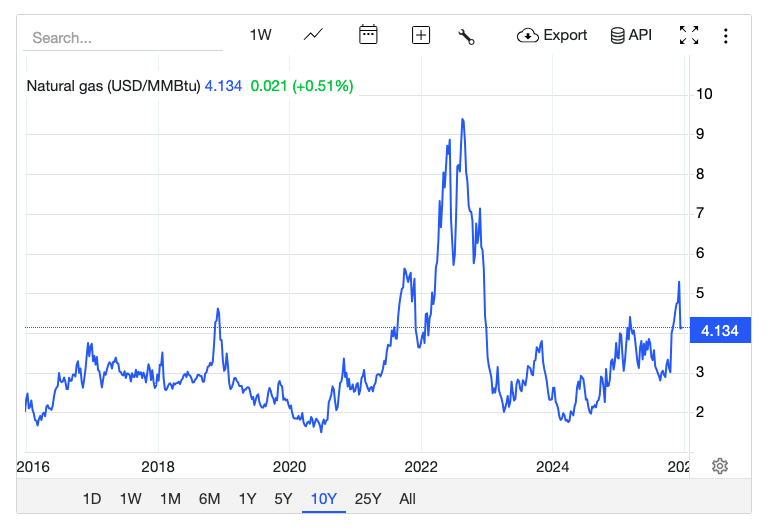
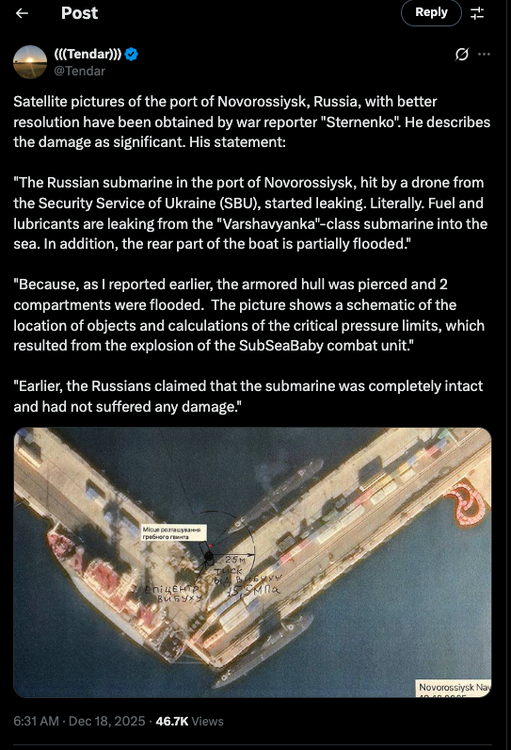
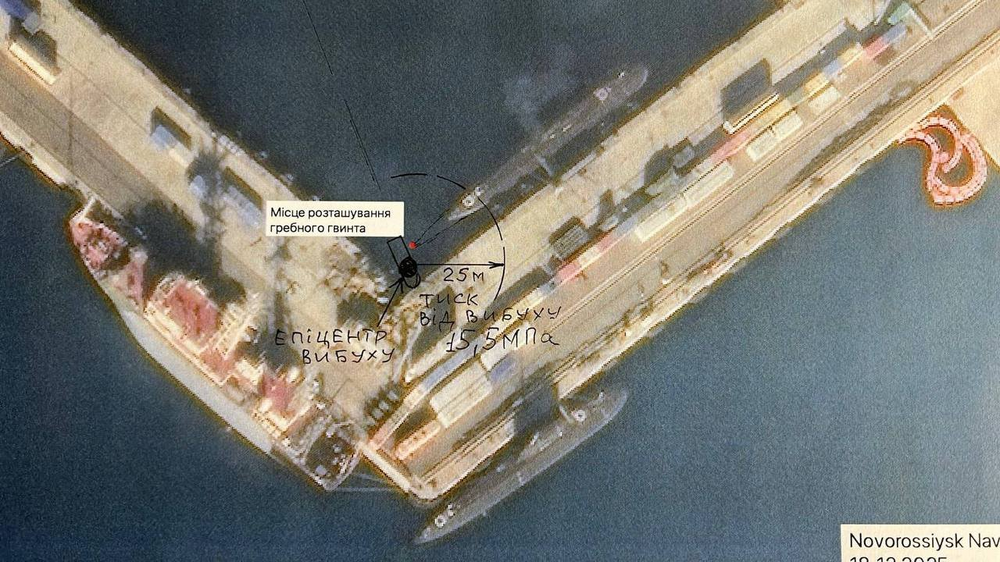
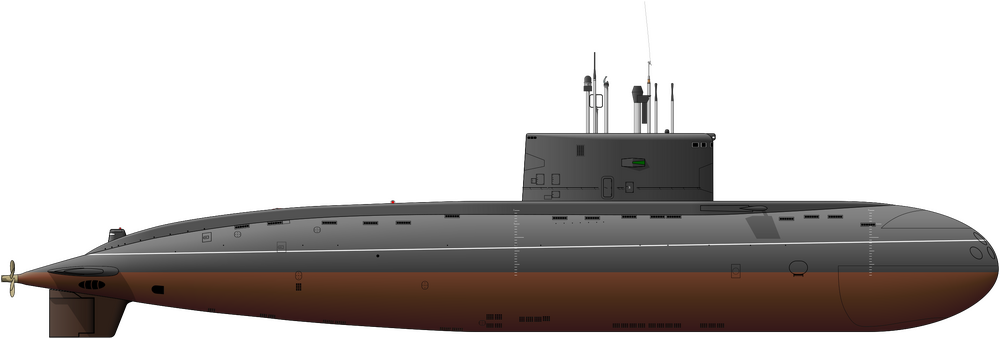
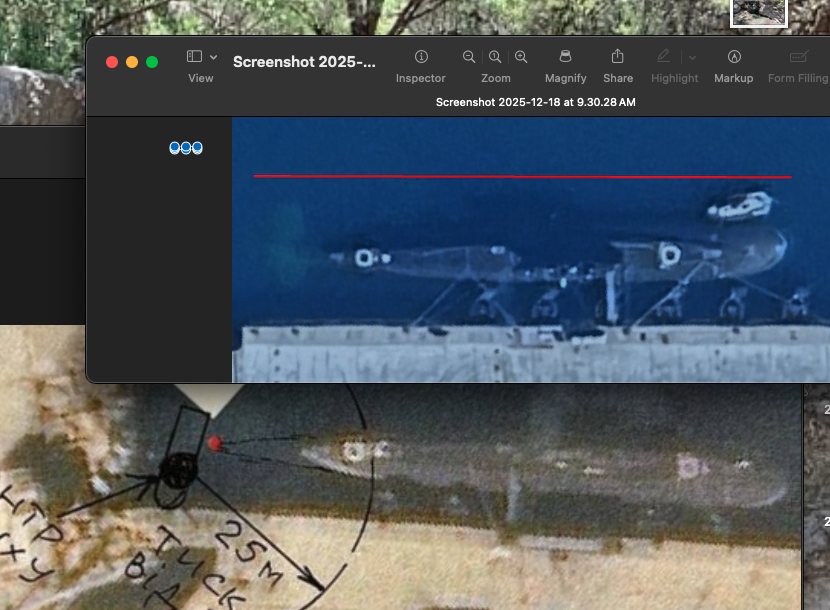



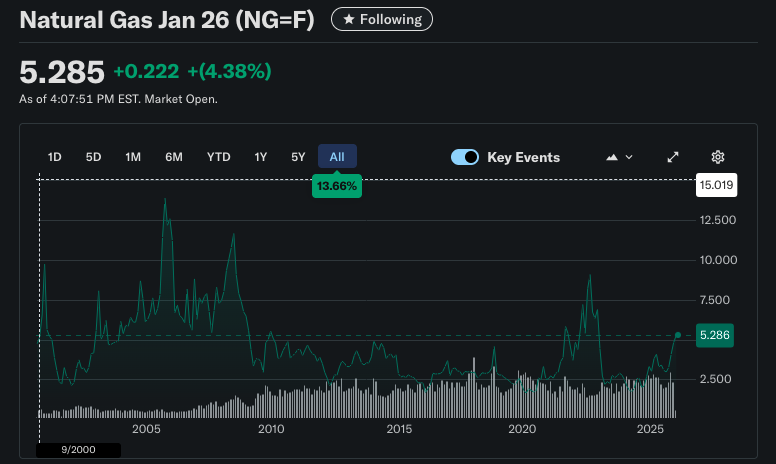
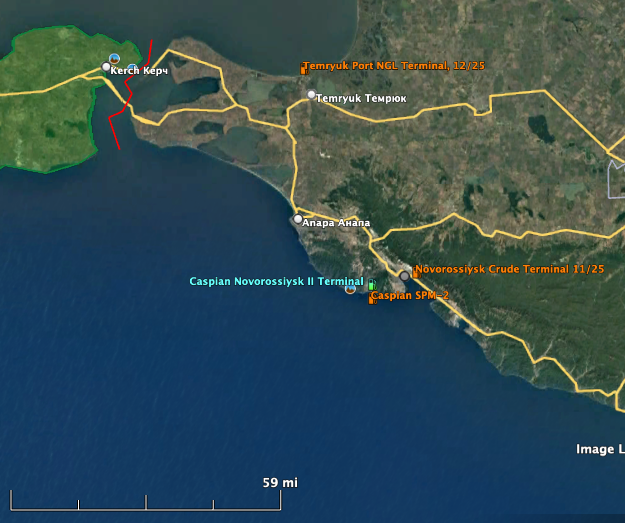
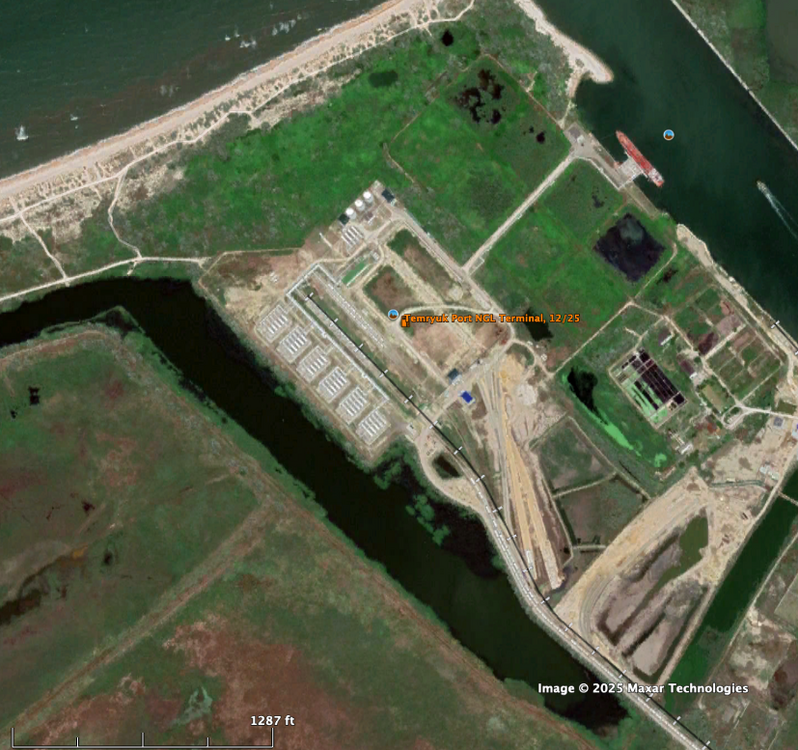
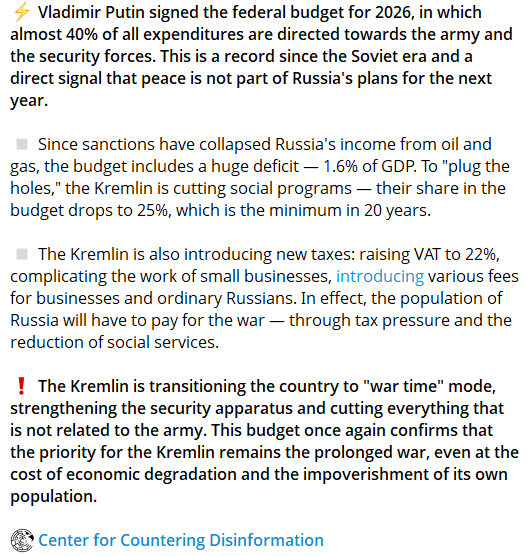

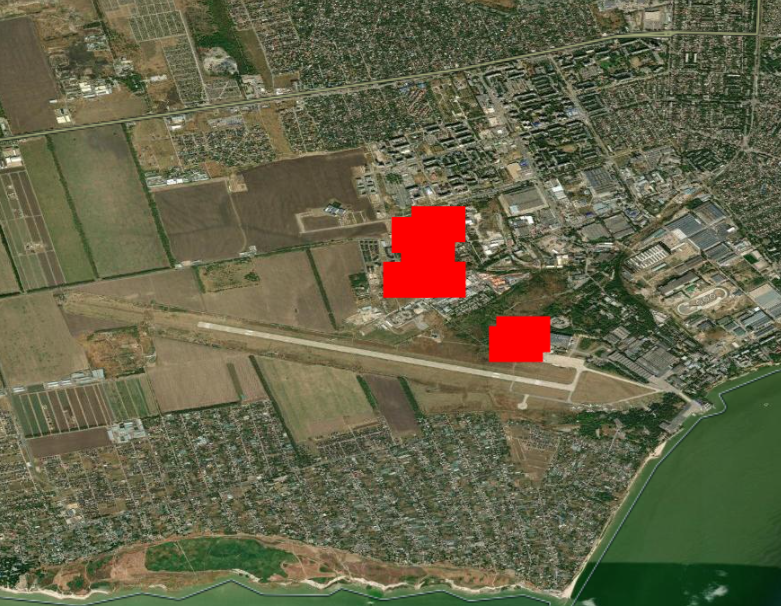

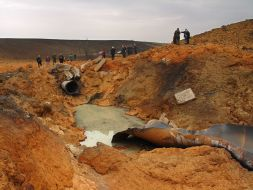
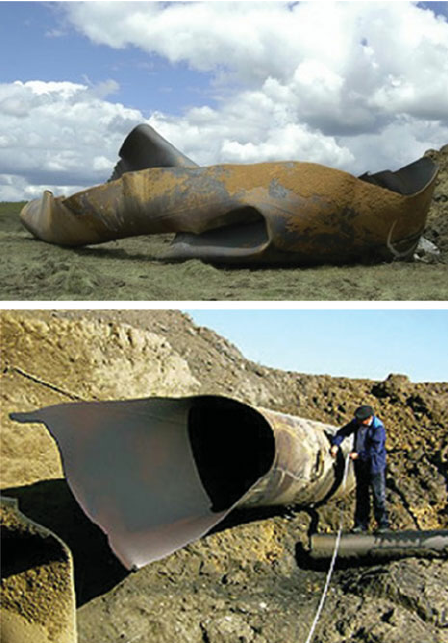
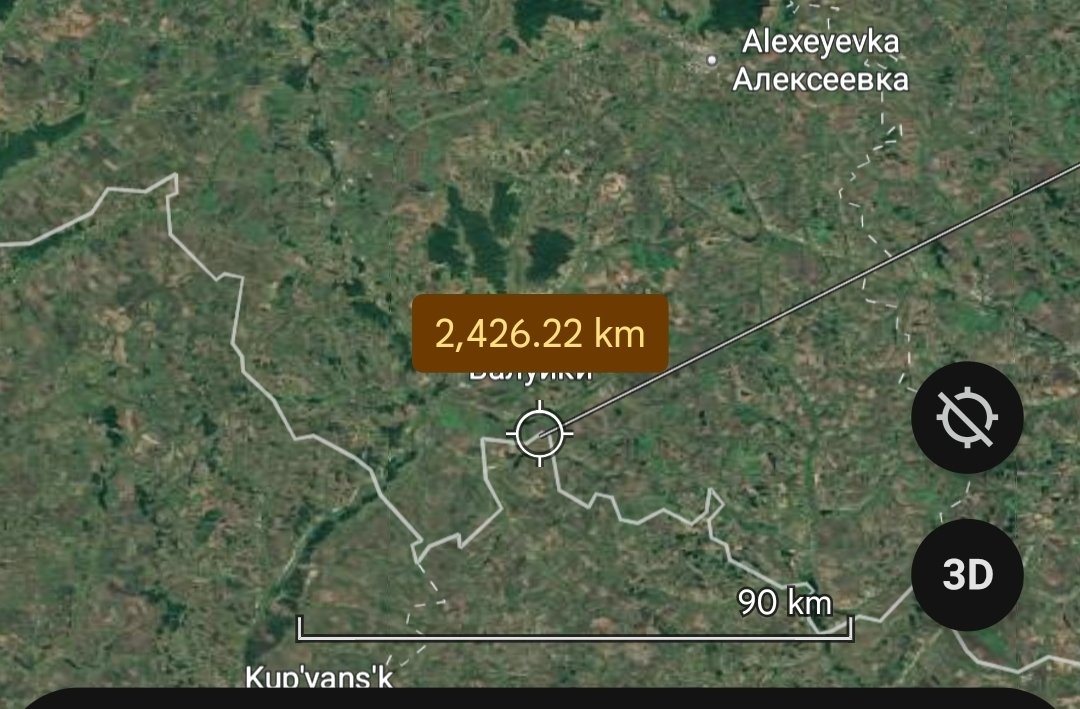
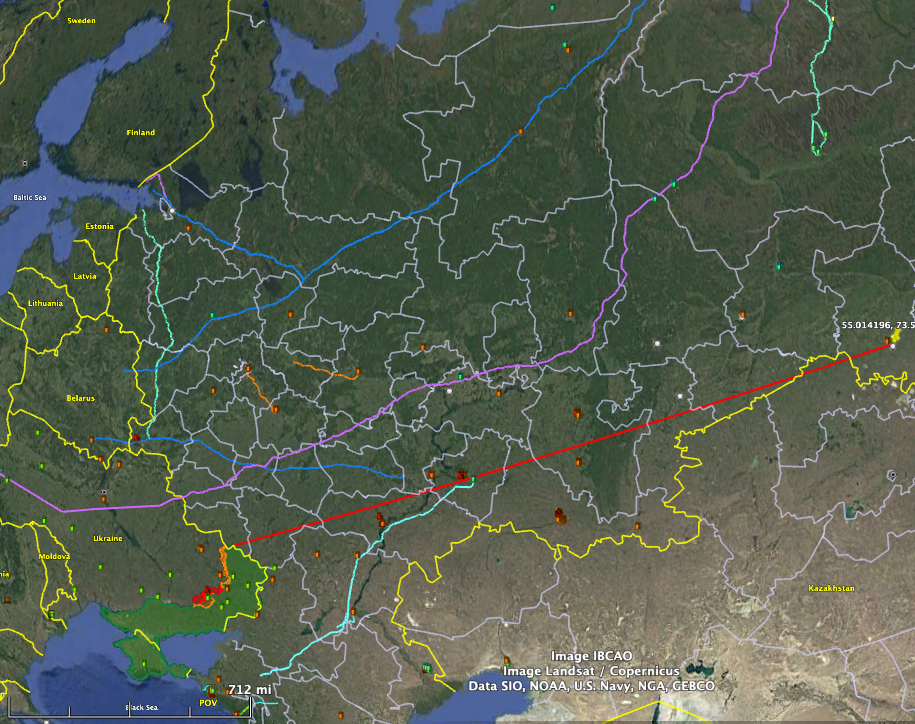
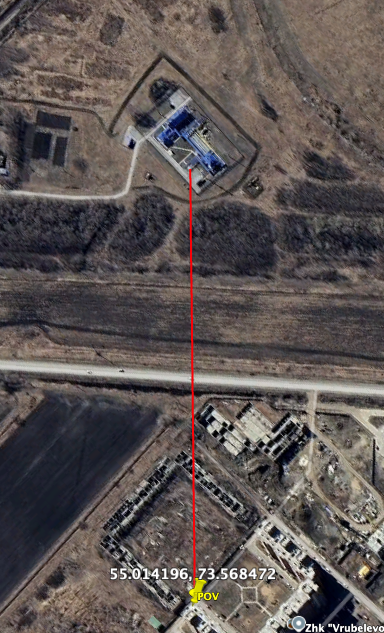

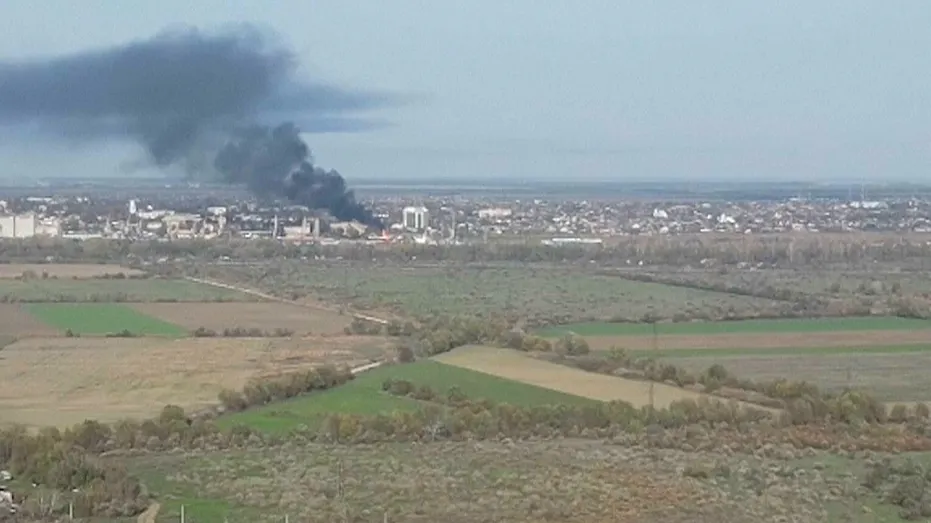

Русский корабль - иди нахуй
in Daily Texan
Posted · Edited by PTINS
new info
BBC; Russian general killed by car bomb in Moscow, officials say
A Russian general has been killed in a car bombing in Moscow, officials have said.
Russia's Investigative Committee said Lt Gen Fanil Sarvarov died on Monday morning after an explosive device planted under a car detonated.
He is the third military official to have been killed in bomb attacks in the Russian capital over the last year.
Sarvarov, 56, was the head of the armed forces' operational training department, the committee said.
It added one theory being investigated was that the bomb was planted with the involvement of Ukrainian intelligence services. Ukraine has not commented.
Sarvarov died in hospital as a result of his injuries, the committee said, adding it had opened an investigation into murder and illegal trafficking of explosives.
Investigators have been sent to the scene, in a car park near an apartment block in the south of Moscow.
Images from the area show a badly damaged white Kia Sorento with the doors blown out, surrounded by other vehicles.
According to Russian media, Sarvarov previously took part in combat operations during the Ossetian-Ingush conflict and the Chechen wars in the 1990s and early 2000s, and also led operations in Syria between 2015-2016.
Reuters Investigators work near a destroyed car after a blast from an explosive deviceReuters
Investigators could be seen working at the scene on Monday morning
Vladimir Putin was informed of Sarvarov's death immediately, Kremlin spokesman Dmitry Peskov said.
Since Russia launched its full-scale invasion of Ukraine in February 2022, a number of military officials and high-profile individuals have been targeted in the Russian capital.
Darya Dugina, the 29-year-old daughter of a prominent nationalist figure and Putin close ally, was killed in a suspected car bombing in 2022.
Gen Yaroslav Moskalik was killed in a car bomb attack last April, while Gen Igor Kirillov died in December 2024 when a device hidden in a scooter was detonated remotely.
A Ukrainian source later told the BBC that Kirillov was killed by Ukraine's security service, though this was never confirmed on the record. As a matter of policy, Ukraine never officially admits or claims responsibility for targeted attacks.
AP; Car bomb kills Russian general in Moscow
MOSCOW (AP) — A car bomb killed a Russian general on Monday, the third such killing of a senior military officer in just over a year. Investigators said Ukraine may be behind the attack.
Lt. Gen. Fanil Sarvarov, head of the Operational Training Directorate of the Russian Armed Forces’ General Staff, died from his injuries, said Svetlana Petrenko, the spokesperson for Russia’s Investigative Committee, the nation’s top criminal investigation agency. He was 56.
“Investigators are pursuing numerous lines of inquiry regarding the murder. One of these is that the crime was orchestrated by Ukrainian intelligence services,” Petrenko said.
Since Moscow sent troops into Ukraine nearly four years ago, Russian authorities have blamed Kyiv for several assassinations of military officers and public figures in Russia. Ukraine has claimed responsibility for some of them. It has not yet commented on Monday’s death.